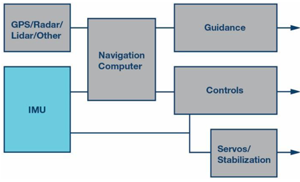We are entering a remarkable time in the advancement of missiles and munitions. As an industry, we are incorporating guidance and “intelligence” into ever smaller munitions. Recently, DARPA programs such as MADFIRES, and independent activities by major defense suppliers, have put forward the challenge of placing complex sensing, guidance, control and computing electronics in projectiles and pyrotechnic-launched (gun-launched) munitions within ever smaller diameters (< 20 mm internal).
To address the challenges of miniaturization and increased density of components in a given volume, the industry has focused on reducing size, weight and power (SWaP). This long-running approach is beginning to see limits in foundry and packaging processes and the continued SWaP progression. Two key factors are behind this.
The first revolves around not only volume, but the details of geometry. Most modern packages and die are based on squares, rectangles or cubes. While this is conducive to many layouts and sub-systems, it is not optimal for the circular or spherical enclosures found in most projectile munitions or missiles.
Modern processes and economies of scale do not allow for the creation of curved dies, so a more practical solution lies in packaging technology. But unlike conventional Package on Package (PoP), FlipChips or Simple 2-D stacks, a more advanced System in Package (SiP) is required to provide munitions systems engineers with integrated functionality in a geometry conducive to the shape of ever-shrinking smart munitions.
The problem is exacerbated by the limited space for electronics. As a result, the solution needs to lean more toward a module that contains and protects the die, as well as providing the correct interfaces to seeker sensors and flight control hardware. In other words, one fully integrated module incorporating bare die that supports V62 and High Performance Product Standards (temperature, vibration, wire bonding).
This requires the capabilities to manufacture all the die-level components in the signal chain and the ability to integrate them into a module. There are few companies with the experience and expertise to tune and create custom die level components for integration into highly dense packages.
 Along with the challenge of complex designs, packaged components must withstand and function under the extreme acceleration (g-forces, g) of faster moving missiles and pyrotechnic launched munitions. Designs that relied on small size and low mass to counter events, such as drop shock and automotive collisions, are now being looked at to survive and perform in these far more demanding applications. Electronics manufacturers focused on high performance component designs now need to understand mass models, elasticity and the other factors in this rapidly evolving part of the defense industry.
Along with the challenge of complex designs, packaged components must withstand and function under the extreme acceleration (g-forces, g) of faster moving missiles and pyrotechnic launched munitions. Designs that relied on small size and low mass to counter events, such as drop shock and automotive collisions, are now being looked at to survive and perform in these far more demanding applications. Electronics manufacturers focused on high performance component designs now need to understand mass models, elasticity and the other factors in this rapidly evolving part of the defense industry.
Programs such as hypersonic missiles, kinetic kill weapons and smart rounds launched from barrels all push existing limits when it comes to electrical design survivability.
High speed projectiles also create extreme heat from air friction at lower altitudes. A smaller package needs to be able to shield itself from intense heat and rapid temperature changes. The temperature of a hypersonic missile launched from the wing of an aircraft can experience can quickly go from -55°C to heat extremes that challenge existing die temperature operations.
Much work is being done in these areas, but challenges still remain. And aside from applying motion physics to electrical design, the requirements of acceleration survivability are still being defined. For example, a chart with acceleration on one axis and time on another will differ depending on the application. A single high-bar solution may not be applicable depending on the endurance required and mitigation to different period and duration of acceleration events. And a bullet fired from a weapon experiences much different acceleration profiles than a bullet in a centrifuge.
Partnerships have developed to test designs and establish system requirements to move the industry toward standardization. What will be required is the ability to integrate and manufacture a solution for a round geometry sealed module that can withstand the intense acceleration conditions. The integrated solution will need to contain everything from converters attached to the sensors, to digital signal processors linked with MEMS-based inertial guidance and fusing systems, through to the precision motor control circuits. Furthermore, this system must survive years of storage, efficiently manage power along with surviving an extremely challenging environments.

